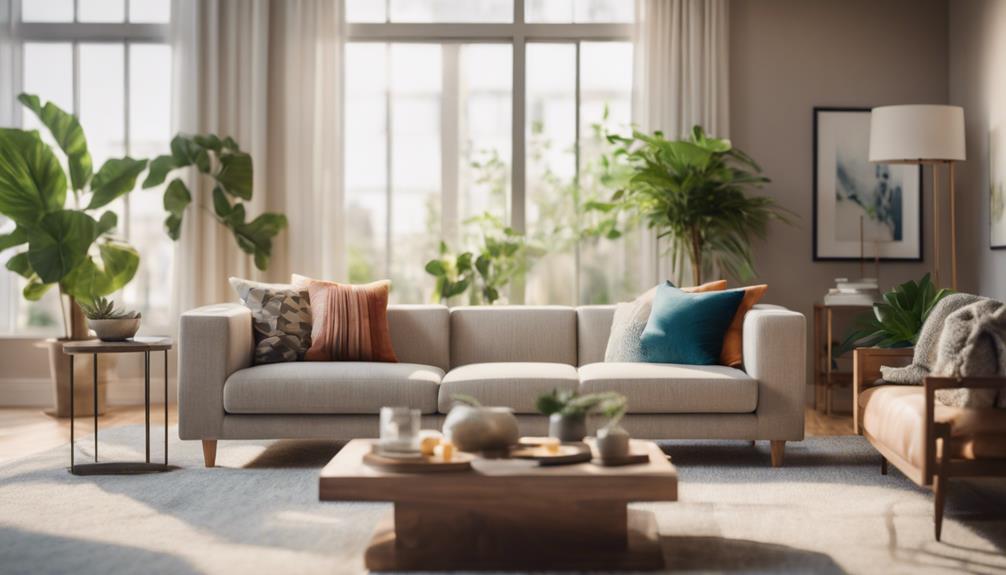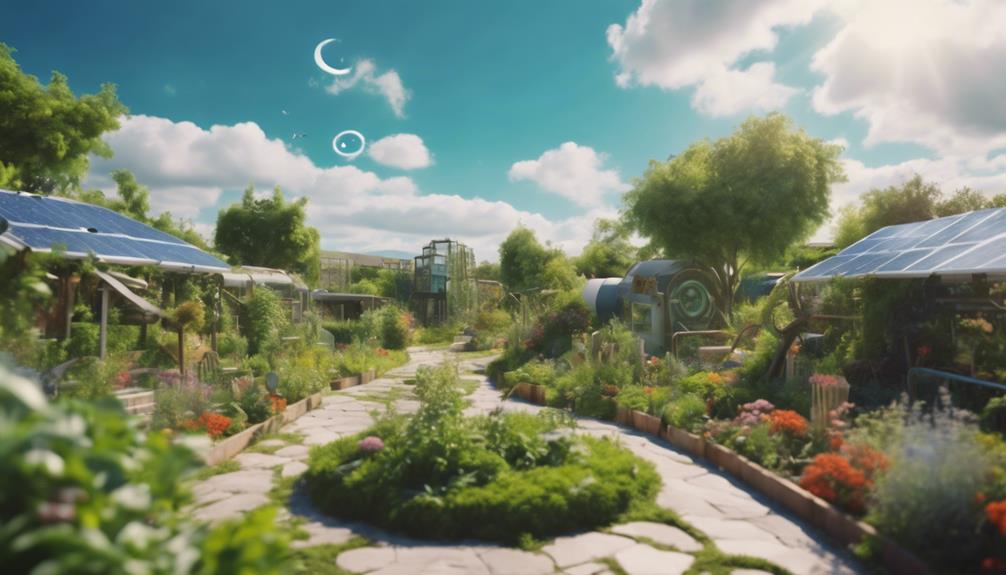Discovering the principles of circular sustainability involves recognizing the importance of reusing and recycling materials to keep resources in circulation and reduce waste. Instead of following a linear model of purchasing and disposing of items, a circular economy focuses on prolonging the lifespan of products. For example, companies like CORT provide furniture rental services, allowing individuals to enjoy high-quality items while also decreasing landfill waste. Opting for circular alternatives not only saves you money, but also actively contributes to a sustainable future. Embracing these practices encourages innovation in design and production. You’re just beginning to explore the possibilities, as there is so much more to learn about this transformative approach.
Key Takeaways
- Circular sustainability prioritizes keeping materials in use, reducing waste, and minimizing the environmental impact of production and disposal processes.
- The circular economy contrasts with the linear model by focusing on extending the life cycle of products through reuse and recycling.
- Companies like CORT exemplify circularity by renting furniture, refurbishing items, and maintaining quality, thereby reducing landfill contributions.
- Embracing circularity encourages innovation in design and production, leading to more sustainable and adaptable products.
Understanding Circularity in Sustainability

Circularity in sustainability means keeping materials in circulation instead of tossing them away, ensuring products are reused, repaired, or recycled to minimize waste.
Unlike a linear economy where you buy, use, and discard products, a circular economy focuses on extending the life of items.
You'll see this in real-world examples like breweries that recycle ingredients, clothing brands that resell or upcycle garments, and electronics companies that refurbish old devices.
By choosing circular options, you help preserve resources and reduce waste.
This approach not only benefits the environment but also fosters innovation, encouraging businesses to rethink how they design and produce their goods.
Embracing circularity is essential for a sustainable future where waste is minimized and resources are valued.
CORT's Impact on Circularity
CORT plays a notable role in promoting circularity by offering a furniture rental model that keeps high-quality items in circulation and reduces waste. When you choose to rent from CORT, you're directly contributing to sustainability efforts.
Their furniture is designed to be durable, allowing multiple rentals, which extends its lifespan considerably. Throughout your rental period, trained experts guarantee the furniture remains in excellent condition, minimizing the chance of it ending up in a landfill.
Once you're done with the items, CORT efficiently collects and refurbishes them for future use. This approach not only supports a circular economy but also encourages responsible consumption, making it easier for you to participate in sustainable living practices.
Benefits of CORT Furniture Rental

Renting furniture from CORT often provides you with flexibility and convenience, making it an ideal choice for various living situations. You can easily adapt your space without the commitment of purchasing. CORT's rental options allow you to choose from diverse styles that fit your taste and budget, ensuring you have what you need when you need it. Plus, the sustainability aspect means you're making an eco-friendly choice.
| Benefit | Description | Impact |
|---|---|---|
| Flexibility | Change furniture as your needs evolve | Tailored living experience |
| Cost-Effective | Avoid large upfront costs | Saves money in the long run |
| Eco-Friendly | Supports circular economy practices | Reduces waste and resource use |
How to Rent From CORT
To get started with your furniture rental, simply browse CORT's online selection or visit a local showroom to find the perfect pieces for your space.
Once you've chosen your items, you can select flexible lease terms that suit your needs.
CORT offers tailored furniture packages, making it easy to furnish any area, whether it's a home, office, or temporary living situation.
After you place your order, they'll handle the delivery and setup, ensuring everything's ready for you.
When you no longer need the furniture, CORT will collect it, reinforcing their commitment to a circular model.
This way, you can enjoy stylish, high-quality furniture while contributing to sustainability efforts.
Exploring Additional Resources

Discover a wealth of additional resources that can enhance your journey toward sustainable living and eco-friendly decorating practices. You'll find a variety of helpful topics and platforms to support your goals. Check out the table below for quick references:
| Resource Type | Description | Where to Find |
|---|---|---|
| Blogs | Insightful articles on sustainability trends | Online platforms |
| Social Media | Follow eco-conscious brands for inspiration | Instagram, Facebook |
| Community Events | Join local workshops and gatherings | Community boards |
| DIY Guides | Step-by-step instructions for upcycling | Pinterest, YouTube |
Engaging with these resources will deepen your understanding and empower you to make impactful choices in your sustainable journey!
How Can Sustainable Practices Lead to Savings in Furniture?
Opting for sustainable practices in furniture production and usage can result in incredible furniture savings today. This includes using eco-friendly materials, reducing waste in manufacturing, and investing in durable, long-lasting pieces. Sustainable practices can lead to cost savings for both manufacturers and consumers by promoting efficient resource use and minimizing environmental impact.
How are Celebrities Incorporating Circular Sustainability into Their Home Designs?
Ecoconscious celebrities sustainable homes are incorporating circular sustainability into their home designs by using renewable materials, energy-efficient systems, and promoting minimalism. Some are even building their homes with eco-friendly methods, incorporating recycled and upcycled materials to reduce their environmental impact and inspire others to do the same.
Conclusion
As you step into the world of circular sustainability, think of yourself as a gardener nurturing a thriving ecosystem.
Every choice you make—whether it's renting furniture or upcycling—plants seeds for a greener future.
By embracing these practices, you're not just reducing waste; you're cultivating a sustainable lifestyle that flourishes for generations to come.
Together, let's transform resources into a continuous cycle of renewal, creating a vibrant planet that reflects our commitment to the environment.









